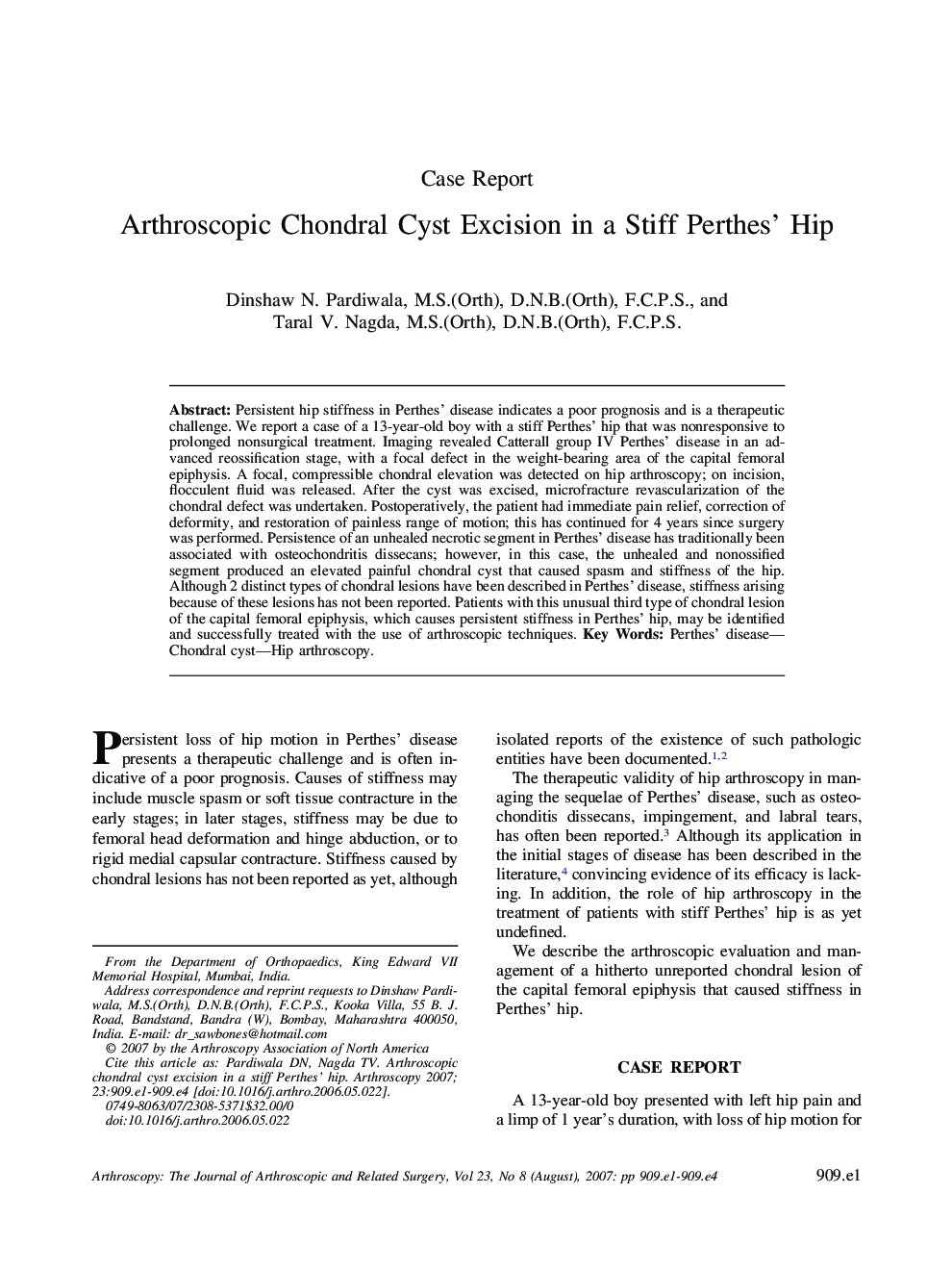| Article ID | Journal | Published Year | Pages | File Type |
|---|---|---|---|---|
| 4047514 | Arthroscopy: The Journal of Arthroscopic & Related Surgery | 2007 | 4 Pages |
Abstract
Persistent hip stiffness in Perthes' disease indicates a poor prognosis and is a therapeutic challenge. We report a case of a 13-year-old boy with a stiff Perthes' hip that was nonresponsive to prolonged nonsurgical treatment. Imaging revealed Catterall group IV Perthes' disease in an advanced reossification stage, with a focal defect in the weight-bearing area of the capital femoral epiphysis. A focal, compressible chondral elevation was detected on hip arthroscopy; on incision, flocculent fluid was released. After the cyst was excised, microfracture revascularization of the chondral defect was undertaken. Postoperatively, the patient had immediate pain relief, correction of deformity, and restoration of painless range of motion; this has continued for 4 years since surgery was performed. Persistence of an unhealed necrotic segment in Perthes' disease has traditionally been associated with osteochondritis dissecans; however, in this case, the unhealed and nonossified segment produced an elevated painful chondral cyst that caused spasm and stiffness of the hip. Although 2 distinct types of chondral lesions have been described in Perthes' disease, stiffness arising because of these lesions has not been reported. Patients with this unusual third type of chondral lesion of the capital femoral epiphysis, which causes persistent stiffness in Perthes' hip, may be identified and successfully treated with the use of arthroscopic techniques.
Keywords
Related Topics
Health Sciences
Medicine and Dentistry
Orthopedics, Sports Medicine and Rehabilitation
Authors
Dinshaw N. M.S.(Orth), D.N.B.(Orth), F.C.P.S., Taral V. M.S.(Orth), D.N.B.(Orth), F.C.P.S.,
